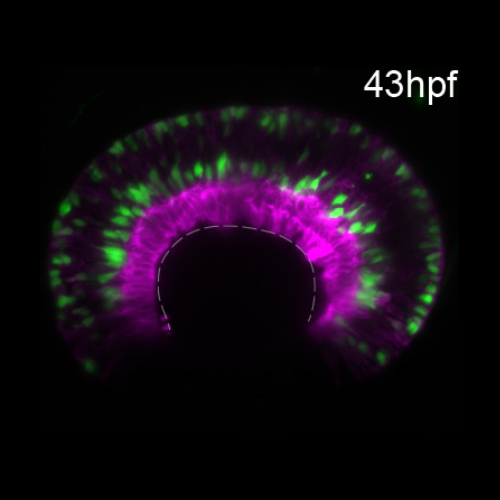Stochastic single cell migration leads to robust horizontal cell layer formation in the vertebrate retina.
Developmental programs that arrange cells and tissues into patterned organs are remarkably robust. In the developing vertebrate retina, for example, neurons reproducibly assemble into distinct layers giving the mature organ its overall structured appearance. This stereotypic neuronal arrangement, termed lamination, is important for efficient neuronal connectivity. Although retinal lamination is conserved in many vertebrates, including humans, how it emerges from single cell behaviour is not fully understood. To shed light on this issue, we here investigated the formation of the retinal horizontal cell layer. Using in vivo light sheet imaging of the developing zebrafish retina, we generated a comprehensive quantitative analysis of horizontal single cell behaviour from birth to final positioning. Interestingly, we find that all parameters analysed, including cell cycle dynamics, migration paths and kinetics, as well as sister cell dispersal, are very heterogeneous. Thus, horizontal cells show individual non-stereotypic behaviour before final positioning. Yet these initially variable cell dynamics always generate the correct laminar pattern. Consequently, our data show that the extent of single cell stochasticity in the lamination of the vertebrate retina is underexplored.

- Development. 2019 May 24;146(12)
- 2019
- Developmental Biology
- 31126979
- PubMed
Enabled by:
